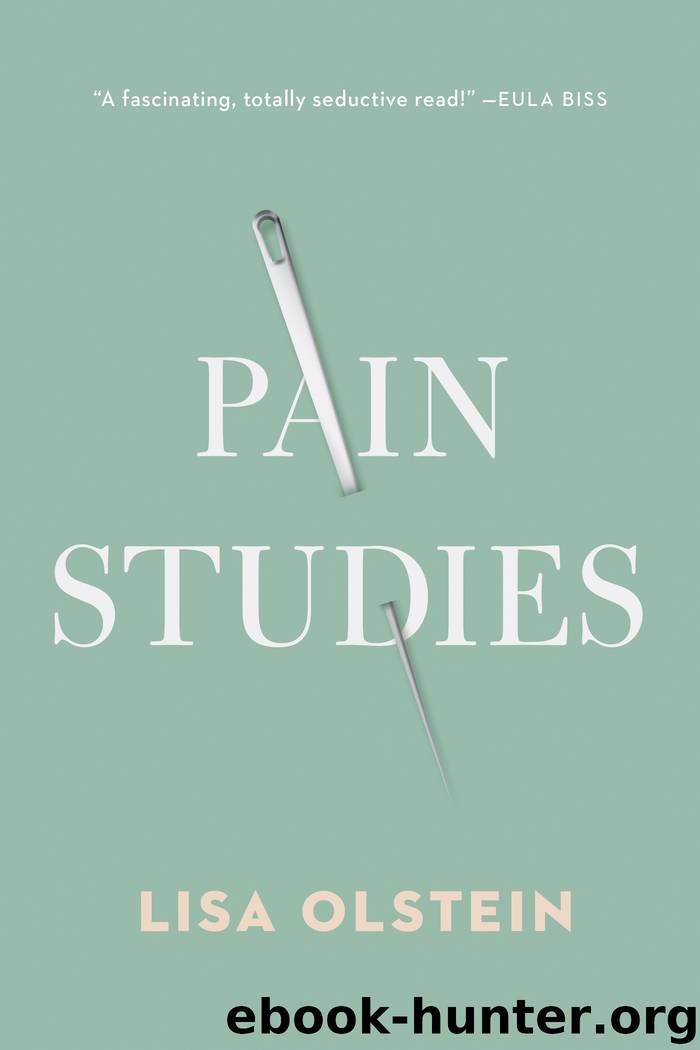Pain Studies by Lisa Olstein

Author:Lisa Olstein
Language: eng
Format: epub
Publisher: Bellevue Literary Press
Published: 2020-03-16T16:00:00+00:00
21
“With its stunning camerawork and striking compositions, Carl Theodor Dreyer’s The Passion of Joan of Arc convinced the world that movies could be art,” declaims the Criterion Collection’s introductory gloss. The much-lauded film devoted to Joan’s ordeal went through ordeals of its own. Censored, destroyed by fire, painstakingly restored, destroyed by fire again, for more than fifty years it survived only in mutilated, bastardized form. “Then, in 1981, an original Danish copy, complete and in very good condition, was miraculously discovered in a closet of a Norwegian mental institution.” The reconstituted French version of this copy resulted in a film considered to be “probably very close to the original.”
After months of waiting for just the right moment, finally I watch it. I understand that it was shot in 1928. I understand that nearly everything about our understanding of cinema and acting and women was different then. I understand, too, that silent movies must find alternative ways to speak. Shot by shot, I find the film beautiful: lush of tone, masterfully framed. But I hate it. This Joan—wide-eyed and quivering, weepy and girlish, dreamy and vague, a nightmare, really, of male-gaze-defined feminine virtue in all its fainting, feinting, by gosh a little wispy bit of gumption—this Joan is no Joan of mine.
I find myself fascinated, though, by how more than three-quarters of the way through the film, in the scenes depicting Joan’s conviction for relapse and her subsequent execution, Dreyfus seems to step before our very eyes from the realm of photography into the realm of film. For eighty-seven minutes we’ve inhabited a visual world overwhelmingly made up of closely held, wildly carved human faces that process across the screen like a series of richly toned black-and-white portraits reminiscent not only of still photography but of Renaissance paintings, Byzantine icons, even Greek and Roman busts. The effect is so pervasive that when these living faces move, they look like objects put through the motions of stop-action animation.
Then, suddenly, Dreyfus gives us the outdoors, where before we had been exclusively inside; he gives us commoners, where before we had only clergy and duncelike dungeon staff, and among these commoners are women, and we realize we’ve been in a world made up exclusively of men plus Joan: Joan of men’s clothes and close-cropped hair, Joan of highly stylized near-hysterical wide-eyed ecstasy and fear, of erotically infused enthusiasm and cloyingly “feminine” tears, circled, always circled, by statues-come-to-life men, a parade of them usually, pouring into the frame as if clown-car sprung.
But now we have smoke from the fire that will kill and a crowd—messy folk with their mushy faces and missing teeth, their stupid caps, their base bloodlust, and their soft-spined sorrow—all of them quick-cut, blurry, chaotic. And then in the midst of it, clear and steady, the camera closes in on an infant suckling. No woman whole, just breast and baby. The infant pauses in its work, comes off the nipple—ostensibly to stare for an unbearably “pregnant” moment at the stage on which the pageant of Joan’s death is playing out—then returns to it, latching good, sucking hard.
Download
This site does not store any files on its server. We only index and link to content provided by other sites. Please contact the content providers to delete copyright contents if any and email us, we'll remove relevant links or contents immediately.
Periodization Training for Sports by Tudor Bompa(8170)
Why We Sleep: Unlocking the Power of Sleep and Dreams by Matthew Walker(6618)
Paper Towns by Green John(5091)
The Immortal Life of Henrietta Lacks by Rebecca Skloot(4525)
The Sports Rules Book by Human Kinetics(4294)
Dynamic Alignment Through Imagery by Eric Franklin(4118)
ACSM's Complete Guide to Fitness & Health by ACSM(3989)
Kaplan MCAT Organic Chemistry Review: Created for MCAT 2015 (Kaplan Test Prep) by Kaplan(3940)
Introduction to Kinesiology by Shirl J. Hoffman(3726)
Livewired by David Eagleman(3684)
The Death of the Heart by Elizabeth Bowen(3552)
The River of Consciousness by Oliver Sacks(3541)
Alchemy and Alchemists by C. J. S. Thompson(3451)
Bad Pharma by Ben Goldacre(3357)
Descartes' Error by Antonio Damasio(3230)
The Emperor of All Maladies: A Biography of Cancer by Siddhartha Mukherjee(3067)
The Gene: An Intimate History by Siddhartha Mukherjee(3047)
The Fate of Rome: Climate, Disease, and the End of an Empire (The Princeton History of the Ancient World) by Kyle Harper(3003)
Kaplan MCAT Behavioral Sciences Review: Created for MCAT 2015 (Kaplan Test Prep) by Kaplan(2940)
